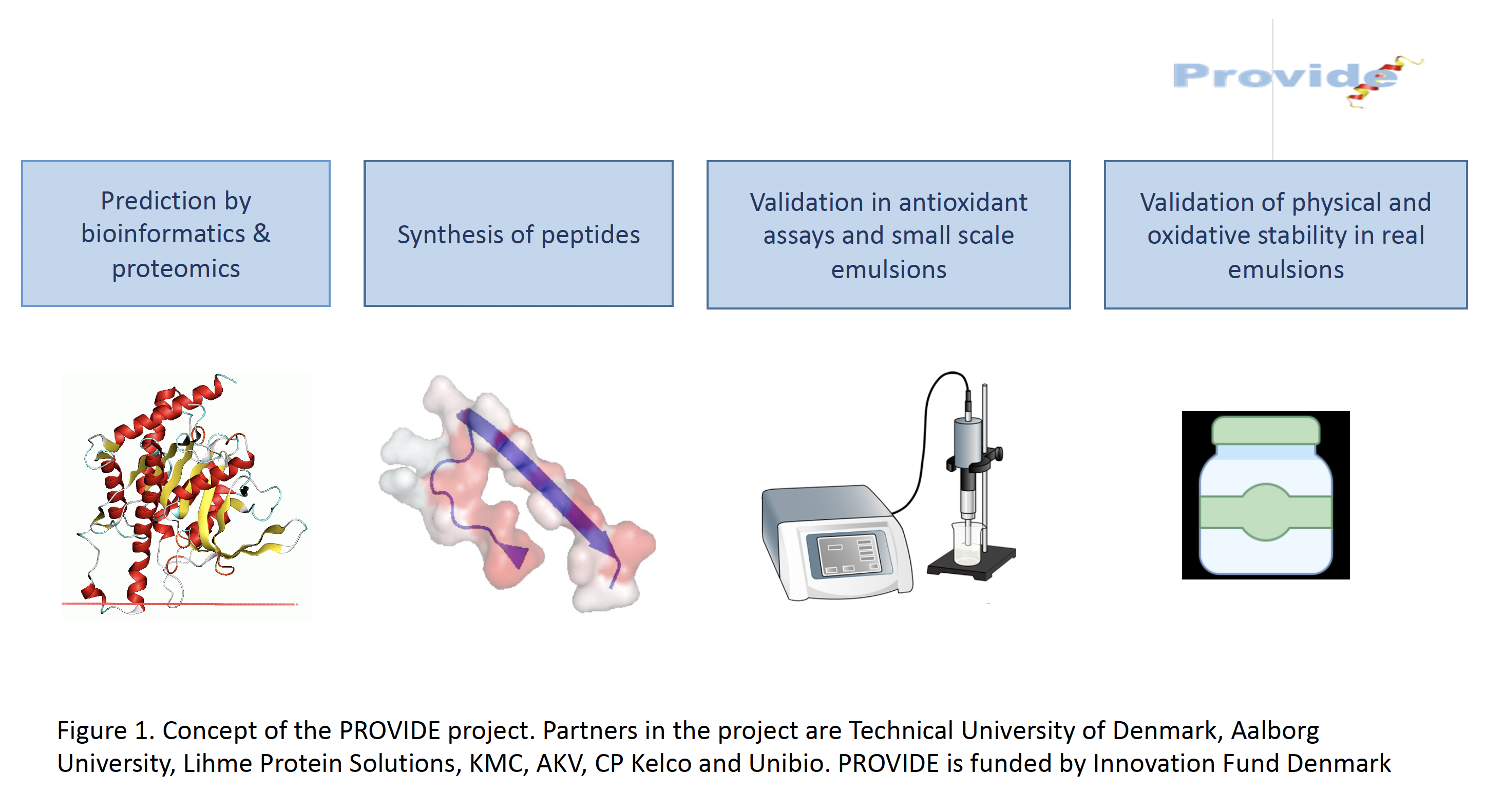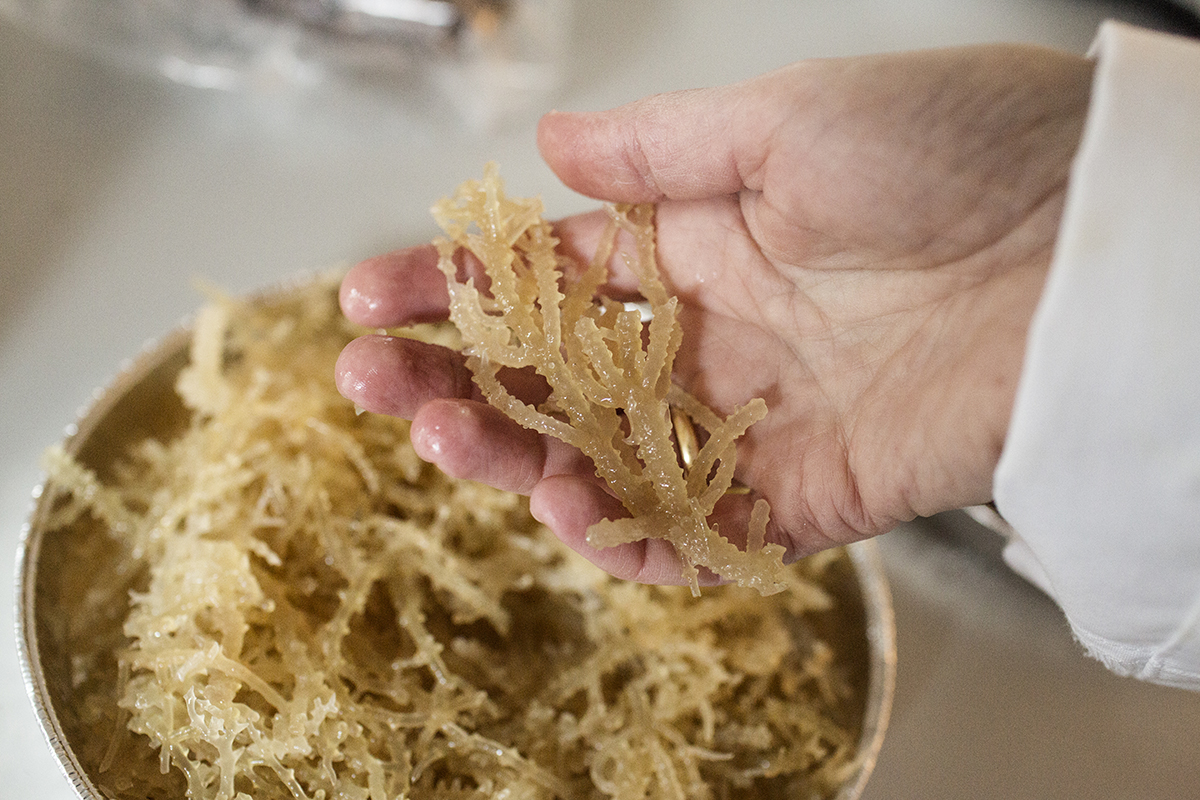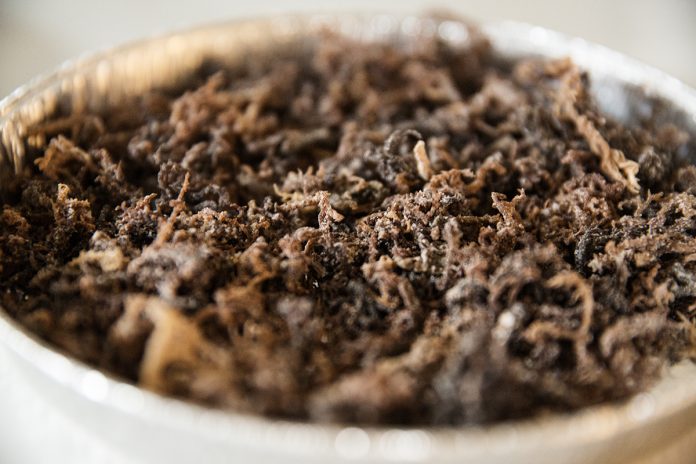Prof Charlotte Jacobsen from the National Food Institute, DTU, explains how proteins can be extracted from red seaweed sustainably
She also describes how seaweed proteins are used to produce peptides for potential use as antioxidants and emulsifiers in the food, feed and cosmetics industries
In May 2020, the EU adopted its Farm to Fork Strategy as part of the European Green Deal. This strategy sets out a clear direction to reduce the environmental and climate footprint of the EU food system. One of the goals is that the strategy should “lead to a global transition towards competitive sustainability from farm to fork and tapping into new opportunities”1. To reach this goal research on sustainable food production is necessary.
In the last issue of this journal, I described the research performed on the utilisation of side-streams from seafood production in the BBI JU project WaSeaBi2, which my research group contributes to. In this article, I present some examples of the group’s research on multi-extraction of ingredients (protein and hydrocolloids) from red seaweed, which was performed in the VALSEA project funded by the Danish Green Development Programme (GUDP). I will also discuss the use of bioinformatics and proteomics to guide the hydrolysis of seaweed proteins to obtain peptides with emulsifying and antioxidant properties. This research is ongoing and is carried out in the PROVIDE project, which also focuses on protein-rich side-streams from potato starch production and proteins from single-cell production.
Red seaweed – a source of proteins and carrageenan
Several Red seaweeds contain high amounts of polysaccharides, such as agar and carrageenan, which are hydrocolloids that are extracted commercially for numerous food and pharmaceutical applications due to their texturizing and stabilizing properties. Red seaweed also contains proteins (ca. 4-50 % per dry weight). but there is currently no commercial production of proteins from red seaweed. If just half of all the protein available in the seaweed species currently used for carrageenan production could be extracted, this would result in an estimated amount of 20,000 tonnes of non-animal protein per year3.
Multi-extraction of protein & carrageenan from red seaweed
In the VALSEA project, we developed multi-extraction processes to extract protein and carrageenan from two different red seaweed species, namely Euchema denticulatum (spinosum)4 and Furcellaria lumbricalis. For spinosum, the proteins were extracted in a two-step process. First, the cell wall was broken down by enzymes and then the proteins were extracted under alkaline conditions. Subsequently, proteins were precipitated by lowering pH and recovered by centrifugation.

Alternatively, proteins may be recovered after extraction by membrane filtration. Different carbohydrate and protein degrading enzymes were tested. The best extraction efficiency (ca. 49 %) was obtained when Viscozyme® was used. The protein quality (amino acid profile) was comparable to those of beef and whey. The extraction was carried out at room temperature to preserve the quality of carrageenan, which could be extracted from the residue after protein extraction (see photo). We demonstrated that the carrageen was of a quality similar to or better than carrageenan obtained by the conventional extraction method. Moreover, it was possible to obtain a higher yield of carrageenan when the protein had been extracted before carrageenan extraction.
The same extraction concept was attempted for F. lumbricalis, which is used for the production of furcelleran – a carrageenan-like polysaccharide. This species has another cell wall structure and higher protein content than spinosum. A wide range of different commercial enzymes were evaluated, but none of them increased the protein extraction efficiency compared to extraction without enzymes. Therefore, an extraction concept based on the chemical extraction of protein using potassium hydroxide was developed. It was again demonstrated that high-quality furcelleran could be obtained from the residue after protein extraction. The multi-extraction approach demonstrated in VALSEA could significantly decrease the waste of side-streams from seaweed resources and lead to a new source of high-quality non-animal protein. Furthermore, red seaweed contains other high-value compounds such as antioxidants and pigments, which potentially could be extracted, but this requires more research.
Peptides as emulsifiers and antioxidants
It is well known that peptides from different sources of raw materials such as meat and soy proteins can have emulsifying and/or antioxidant properties. Emulsifiers are used in the production of food emulsions such as mayonnaise, dressing and cosmetic emulsions such as lotions. They are also used in bread making. Emulsifiers help to increase the physical stability of emulsions. Antioxidants are added to food, feed and cosmetics to prevent rancidity (lipid oxidation).
Seaweed peptides – emulsifying and antioxidant properties
Identification of peptides with emulsifying and antioxidant properties usually requires numerous costly and time-demanding steps of hydrolysis, isolation, identification and finally, verification of activity. In the PROVIDE project, we have developed a different and more efficient approach, which was first tested on proteins from potato (Figure 1). Thus, we employed quantitative proteomics for the identification of abundant proteins followed by bioinformatic prediction using Github to identify a number of highly functional emulsifier peptides from potato5. Recently, we have used a similar approach to identify emulsifying and antioxidant peptides in spinosum6,7.

The antioxidant properties were predicted using this tool. We also determined the abundance of the embedded peptides in the spinosum protein. To validate the emulsifying activity of the identified seaweed peptides, we evaluated their effect on interfacial tension and the physical stability of 5% fish oil-in-water emulsions during six days of storage. A good emulsifier can lower the interfacial tension and provide high physical stability. To validate the antioxidant properties, we evaluated their ability to scavenge free radicals in an in vitro assay. A good antioxidant has a high radical scavenging activity.
We also assessed the ability of selected peptides to prevent lipid oxidation in simple oil-in-water emulsions and mayonnaise. The validation studies were carried out with synthetic peptides with a similar amino acid sequence as peptides embedded in spinosum. Among the 12 peptides identified to have emulsifying properties, eight were able to produce emulsions that were physically stable for at least six days. Two of these peptides performed at least as good as a commercial caseinate product produced from milk6. The results of the validation of the antioxidant properties were also very promising with several seaweed peptides exhibiting antioxidant effect in simple oil-in-water emulsions at neutral and acidic pH and in mayonnaise. In conclusion, it is possible to reduce the waste from carrageenan production and at the same time produce a high-value protein that can be converted into functional ingredients for the food, feed and cosmetic industries. The main challenge is that this approach will require substantial investments in redesigning the current production systems.
References
1) European Commission (2020). Farm to Fork Strategy.
2) Open Access Government January 2021, p. 360. https://edition.pagesuite-professional.co.uk/html5/reader/production/default.aspx?pubname=&edid=abe4b9c2-2198-40d4-9b41-c05d7aaff94f&pnum=360
3) Naseri, A., Holdt, S.L., Jacobsen, C. (2019) Nutritional and value added compounds in industrial red seaweed used in carrageenan production. J Aquatic Food Product Technol. 28, 967-973.
4) Naseri, A., Jacobsen, C., Sejberg, J.J.P., Pedersen, T.E., Larsen, J., Hansen, K.M.,Holdt, S.L.(2020) Multi-extraction and quality of protein and carrageenan from commercial spinosum (Eucheuma denticulatum). Foods, 9, 1072.
5) García-Moreno, P.J., Gregersen, S., Nedamani, E.R., Olsen, T.H., Marcatili, P., Overgaard, M.T., Andersen, M.L., Hansen, E.B., Jacobsen, C. (2020). Identification of emulsifier potato peptides by bioinformatics: application to omega-3 delivery emulsions. Scientific Reports 10, 690.
6) Yesiltas, B., Gregersen, S., Lægsgaard, L., Brinch, M.J., Olsen, T.H., Marcatili, P., Overgaard, M.T., Hansen, E.B., Jacobsen, C., García-Moreno, P.J. Emulsifier peptides derived from seaweed, methanotrophic bacteria, and potato proteins identified by quantitative proteomics and bioinformatics. (Submitted to Food Chemistry Feb 2021).
7) Olsen. T., Yesiltas, B., Marin, F.I., Pertseva, M., García-Moreno, P.J., Gregersen, S., Overgaard, M., Jacobsen, C., Lund, O., Hansen, E.B., Marcatili, P. (2020). AnOxPePred: Using deep learning for the prediction of antioxidative properties of peptides. Scientific Reports 10, 2045-2322.
*Please note: This is a commercial profile











